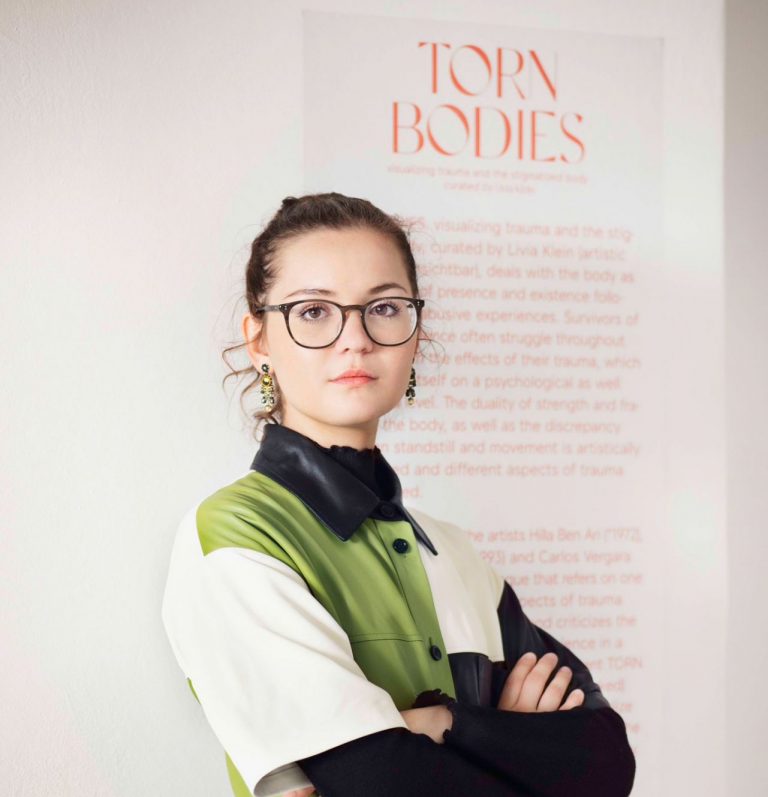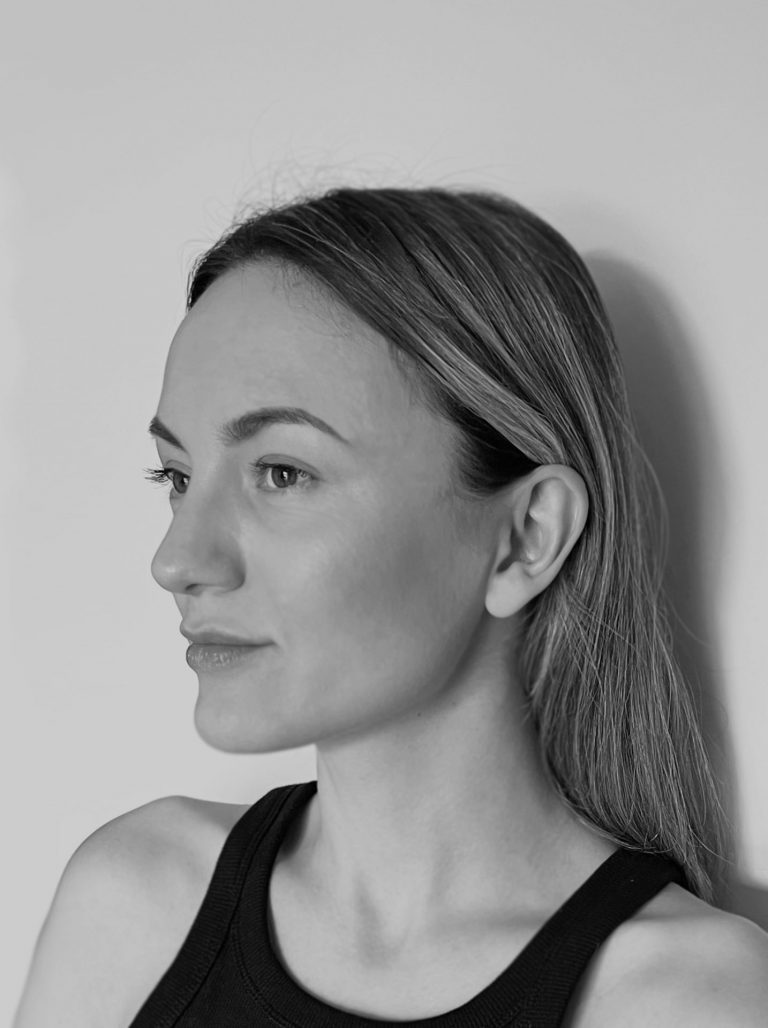Dr. Heide Rogers, psychotherapist and concentrative movement therapist, clinical lead of Fairtherapy introduces the Fairtherapy concept and shares her insights on trauma therapy with special focus on sexualized violence.
What is Fairtherapy and why did you choose the name Fairtherapy? What do you mean by that? What makes your therapy practice fair?
The NGO Fairtherapy was founded ten years ago in 2012 by Dr Ilse Behensky. When she started specializing in trauma therapy, she realized that many people who needed trauma therapy could not afford it. Fairtherapy began as a smaller project. After five years Dr Behensky was able to negotiate a contract with ÖGK, the Austrian health insurance. Since then, our service has expanded. Initially, we only had a couple of therapy groups a week and now we run sixteen groups weekly. In addition, we also offer complementary creative groups.
Trauma therapy groups at Fairtherapy are funded by the Austrian health insurance system. Complementary creative groups are funded by donations. We chose the name as Dr Behensky considered it to be fair to create an affordable service for people who otherwise would not have financial means to access professional trauma therapy.
When it comes to processing trauma most people would probably think of psychotherapy. However, there are a wide variety of alternative methods that could be a good complement to psychotherapy. Through your ‘Gruppen+’ concept, Fairtherapy offers several additional group activities. Can you explain this concept? Are these activities covered by the Austrian health insurance (ÖGK)?
Our concept has a long-term vision. Trauma recovery takes 2-3 years, and it helps to include many aspects of life. The patients who come to us have a variety of symptoms and often they feel lonely. They withdraw themselves from any social contact. Our vision is to enable people to engage in social contact. Not just in the therapy groups that they attend, but also in other contexts. When patients come, we first offer an informative conversation and then an assessment with a clinical psychologist. Once we have the diagnosis by the clinical psychologist, patients can attend an open group for approximately three months. In the open group patients meet different people and encounter a handful of different therapists. Once patients are stable enough to commit to a regular group, they can attend from 1,5 years for up to 3 years.
While attending group therapy, there is the possibility to participate in our additional offer called ‚Gruppen+‘ (‚Groups+‘). This is an additional opportunity for people to engage socially, and to develop and nourish hobbies that help them with processing the trauma. We offer creativity workshops where they can produce for example a miniature Zen-garden. Patients can work with this as an imaginary inner garden, a place of calm and security. In the singing workshop they find their voice again. Some people speak in a very gentle voice when they first visit us. The singing workshop is not just about learning how to sing, but about finding your voice again – and singing together can create a sense of solidarity. One symptom of depression is weight gain. This can be a side effect of antidepressants, but also of social withdrawal. So, we take patients on longer hikes. Thus, patients learn after a while that going for a walk with a friend is not that intimidating after all. They can also attend handicraft workshops, learn how to knit, and crochet, as these activities have been shown to reduce tension in the body. In our theatre group our patients experiment with playing different roles in a fairy tale for example. We also offer yoga workshops, as well as lectures on good and healthy nutrition so that patients learn the importance of a balanced diet and of maintaining vitamin and mineral levels. Our dance workshop supports them in feeling more confident in their body by learning small group dances.
All these activities are voluntary, and our patients can attend as many as they want. Usually, we have ten participants for each session. The workshops tend to be fully booked. We have a certain budget through the donations, but once we have a bigger budget, we hope to be able to expand our Gruppen+ repertoire. Next year we are planning to start a kinesiology group for instance, and possibly a Feldenkreis or an authentic movement group. The feedback on group activities has been very positive. Patients report being able to be more courageous, and better at approaching people.
You are also a movement therapist. How does this expertise help you in your work and approach?
It is an integral part of trauma therapy and of course as a body and movement therapist I think I have a bit of an advantage. I don’t think you can do trauma therapy without incorporating the body, in fact, research tells us that it is a key element. In Austria I am certified as a concentrative movement therapist so there is a lot of mindfulness in the methods that I use. My training really helps in this specialized field.
How do you define trauma?
Trauma can be all sorts of things. It can be violence in a partnership, a terror attack, a horrendous accident, chronic disease, severe surgery, a horrific relationship, an unfulfilled wish to have children, an abortion, a childhood trauma where one parent left suddenly, a difficult divorce, torture, a suicide of a relative, anything that is too hard to process for an individual. Furthermore, we distinguish between different types of traumas. Trauma can be linked to a single event, but it could be a series of events as well. For example, childhood sexual abuse or emotional abuse over many years.
When defining trauma, did you observe any common misconceptions in the public opinion?
The misconception might be that only if you suffered something horrendous like war, a terror attack or rape, it can be traumatic. It’s not what happened, but how it was perceived.
Are there any aspects that are often disregarded even though they are crucial when dealing with trauma?
We distinguish between primary and secondary trauma. The primary trauma would be something horrendous that happened to a person. Secondary trauma, which may often be disregarded, refers to the effect of being a witness to or hearing about a traumatic incident. People in helping professions, therapists, nurses, doctors etc. can suffer from a secondary trauma. Another important aspect that many might not take into consideration is that sometimes it is not the event itself, but the lack of adequate reaction of others to the situation, that is particularly damaging. For example, when someone suffers abuse, there are witnesses, who may not have been able to help the victim. Even if the victims have the courage to report for example a rape or sexual abuse, they might not be heard. And not being heard, not being taken seriously can be even more significant in its effect. For recovery, it is important to give the person a sense of being seen and heard in their misery, in their pain. Legal aspects are also often very important to the survivors of abuse, i.e., that the people who committed crimes end up in court.
The reason for trauma can be diverse. How often is sexualized violence the reason for trauma in your experience?
Our clients present with quite mixed reasons for trauma. In other words, the people who come to us usually experienced a more complex trauma, a series of traumatizing events. In many cases they were victims of some sort of crime. Abuse was often emotional, not only physical. We do have clients who suffered sexualized violence, but usually it is a mixture of different types of abuse.
What do you have to pay special attention to when it comes to working with people who have experienced sexualized violence? Are there special approaches that are needed to deal with trauma through sexualized violence in comparison to other reasons for trauma?
In my experience, for people who suffered sexual violence, the pain is so deeply ingrained in the body that they sometimes are not able to visit a gynaecologist or a doctor. A body-focused approach is helpful in preparing someone for a doctor’s appointment. You cannot do this just through words. We need to work with the body to enable patients to go through with the examination. The shame linked to acknowledging what happened to the body is huge. I had patients where the first half year of the therapy was helping them to become stable enough to attend a doctor. It became clear they felt more confident with a female doctor. For many women it is an absolute no-go to have the examination by a male doctor. Sometimes they need to accept the fact that at the first visit to a doctor they would rather jump off the examining chair and run because it is too much of a trigger. Thus, the focus in therapy is on stabilization. Learning techniques such as a reality check, being conscious about being in a room with a doctor and not in an abusive situation of the past, i.e. learning to differentiate between what happened in the past and what is happening in the here and now. This is the first step for patients to be able to have a medical examination. To acknowledge that the whole traumatizing experience is held in the body is essential.
Can you recall a case where you reached a breakthrough by movement therapy?
There are many cases where breakthrough happens through movement, but the very fact that we often start the session with a physical element, helps people to arrive and to calm down at the beginning of the session. This could be mindfulness exercises, Qigong, or something more playful, like authentic movement in a circle. It is important to start a session by arriving not just as a “shell”, but really arriving in our centre – body, mind, and soul. Only ten minutes of movement-based exercises can help patients to feel more present in the moment; to be in the here and now. It helps them also when travelling on the underground. Many patients can’t even use public transport when they come to us. It is too frightening for them: there are too many people, it is too loud, too smelly. When they are finally able to use public transport it’s a huge step. Movement is a key part in differentiating their wandering thoughts from the here and now. Even if I make a movement with my eyes closed, it’s still a movement. The breath is the first movement that patients learn to regulate. Movements don’t have to be big. Small movements can help on the underground, in a crowd, or when going shopping and feeling stressed. It’s about learning to allow oneself to take a deep breath. People realize they hold their breath out of fear and anxiety. Becoming aware of that is very helpful.
Beside the broad offer of Fairtherapy, what other alternative approaches (events, workshops, group activities etc.) do you know and would recommend in Vienna for processing trauma caused by sexualized violence and why?
There are different hotlines that exist like Frauennotruf and initiatives like Samara or Selbstlaut. Die Boje and die Möwe focus on working with children and adolescents. There are also workshops in Mein Bezirk that are aimed at refugees, supporting women who come forward after having been victims of abuse. Fairtherapy is quite unique in Vienna as we incorporate creative methods in our approach and offer long-term specialized trauma treatment funded by the Austrian health insurance. This makes a huge difference when it comes to accessibility.
Want to learn more about Fairtherapy? Visit https://fairtherapy.at/


